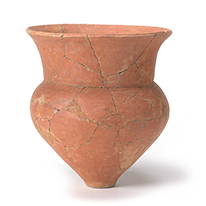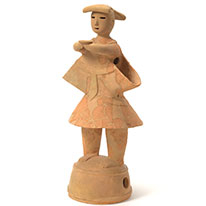Past Exhibitions
- Archeology of Kyushu and the Kinki Area: The Development of Yayoi Pottery, Haniwa Clay Figurines, and Sueki Vessels
- December 19, 2020 - February 28, 2021
Japan's Yayoi (ca. 5th c. BCE–ca. 3rd c. CE) and Kofun (ca. 3rd c.–6th c.) periods are characterized by civilizations that were based on agriculture introduced from the continent. In the Yayoi period, wet-rice culture was introduced to the Japanese archipelago from the Korean peninsula, which provided the foundations for the development of Yayoi pottery. This pottery was produced in different regional styles all over the peninsula except for Hokkaido and Okinawa. In the succeeding Kofun period, the emergence of giant earthen burial mounds, referred to as Kofun, triggered the development of various forms of unglazed ceramic figurines called haniwa. These were placed in and around these tombs and evolved from the previous Yayoi pottery. In the 5th century, a new type of ware, Sueki stoneware, was introduced from the Korean peninsula to Japan, which strongly influenced the production of native Japanese ceramics. This section features Yayoi pottery, haniwa, and Sueki stoneware of the early rice-producing Yayoi and Kofun cultures in Japan.













